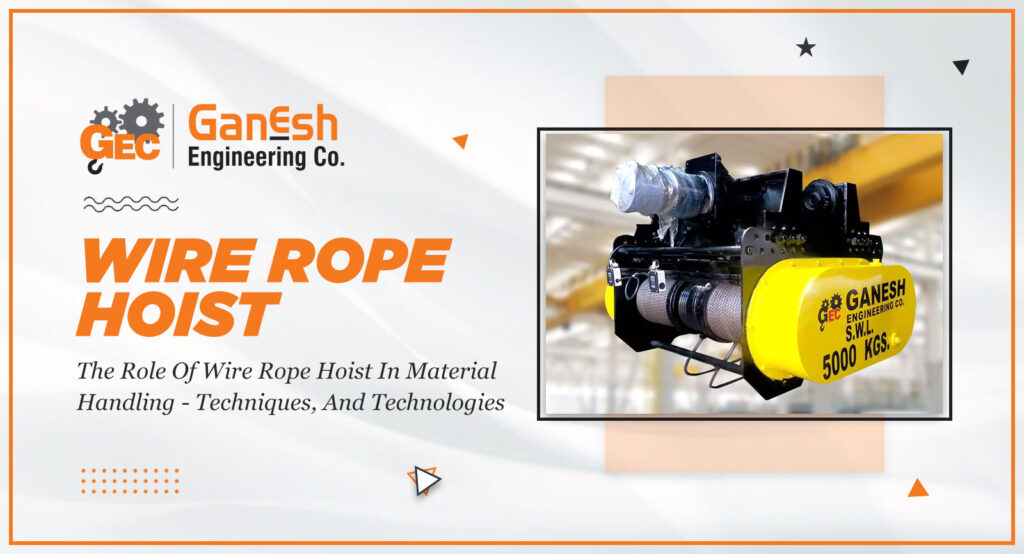
Wire Rope Hoists are essential components of material handling systems that move heavy loads vertically or horizontally. These hoists consist of a motor, gearbox, drum, and wire rope and are designed to provide reliable and efficient lifting and lowering of loads.
The Basics of Wire Rope Hoists
Wire Rope Hoists are available in various sizes and capacities to suit various industrial applications. They can be used for lifting and lowering loads in manufacturing, construction, mining, and other industries. Hoists have a motor, gearbox, drum, wire rope, and hook. The wire rope is wound around the drum, and as the motor turns, it rotates the drum, pulling the wire rope and lifting the load.
Processes and Techniques
Can be used in several material handling processes, including:
Lifting and lowering: EOT Crane can lift and lower loads vertically, horizontally, or at an angle.
Pulling: Can pull loads horizontally or at an angle.
Towing: Tow loads across a distance.
Turning: Can be used to turn or rotate loads.
Depending on the application, hoists can be operated manually or automatically. In manual operation, the operator controls the hoist’s movement using a control pendant or remote control. In automatic operation, the hoist can be integrated into an automated material handling system controlled by a computer or programmable logic controller (PLC).
Technologies
They can have evolved over the years, and modern hoists incorporate advanced technologies to improve performance, safety, and reliability. Some of the technologies used in hoists include:
Variable frequency drives (VFDs): VFDs can control the hoist motor’s speed and torque, improving the hoist’s efficiency and reducing wear and tear.
Overload protection systems: Overload protection systems can be integrated into the hoist to prevent overloading and protect the hoist from damage.
Anti-sway systems: Anti-sway systems can be used to reduce load sway, which can improve the hoist’s precision and safety.
Positioning systems: Positioning systems can be used to accurately position the load, improving the hoist’s efficiency and reducing the risk of accidents.
Remote monitoring and control: Remote monitoring and control systems can monitor the hoist’s performance, detect faults, and control the hoist from a remote location.
The Role of Hoists in Material Handling
Wires play a critical role in material handling operations, providing efficient and reliable lifting and lowering of loads. The benefits of using hoists provided by the best Wire Rope Hoist Suppliers in India in material handling include the following:
Increased efficiency: The hoists can lift and lower loads quickly and efficiently, reducing material handling time and increasing productivity.
Improved safety: Wires can be equipped with safety features, such as overload protection and anti-sway systems, reducing the risk of accidents and injuries.
Flexibility: The hoists can lift and lower loads in various directions and angles.
Cost-effectiveness: Wire can be a cost-effective solution for material handling, as they can be used for various applications and have low maintenance requirements.
Conclusion
These are essential to material handling systems, providing efficient and reliable lifting and lowering of loads. The benefits of using wire rope hoists in material handling operations include increased efficiency, improved safety, flexibility, and cost-effectiveness.
In terms of the best Wire Rope Hoist Manufacturers in India, Ganesh Engineering is considered to be the best one.

Ganesh Engineering
Ganesh Engineering Co. has been a leading manufacturer of Materials Handling Equipment in India since 2004. In order to provide top-notch products and services, our experienced and dedicated team utilizes the latest technology to achieve perfection.
